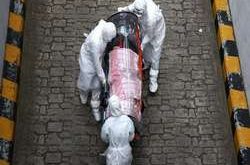
The most important of the arts for the Bolsheviks was the movie. The sacramental phrase was uttered by Lenin in 1922, when the films were silent, but with the advent of sound, and the propaganda value of cinema for ideological education of the masses has only increased. This was the most affordable truly popular entertainment is clear for the worker, the cook, and engineer, and farmer, and their children. In the mid 1930-ies in the Soviet Union thought about the construction of Kinogorod, huge factory, which churned out movies on an Assembly line, hundreds of pieces a year and was arranged on the model of American Hollywood. Where she was supposed to be how it was planned to organize what value this night have regular screenings organized by Stalin and his associates, and why it ended the repression in the review Onliner.
The most important moviegoer
“In 22 hours 58 minutes I got a call that I. V. [Stalin] would like to see the new movies and the film about the “Chelyuskin” were asked to call him. I phoned up the I. V. and asked what I’m doing now. I replied that I had just set up and started showing films about “Chelyuskin”. […] I. V. [Stalin] was asked next, and it’s not difficult if if now to arrange a viewing for him and a number of comrades. […] 23 hours and 19 minutes and began viewing films about “Chelyuskin””. So in the diary described by the regular requests of the leader of its first “people’s Commissar of cinema,” Boris shumyatsky. The leaders of the USSR is exactly the same as ordinary citizens of the country loved to watch the “new film”, as well as Stalin led a nocturnal life, and these shows usually started late in the evening and sometimes was delayed for six hours: the first painting was placed second, sometimes even third, made a break for dinner, and then viewing continued.
Stalin’s daughter Svetlana Alliluyeva in her memoirs “Twenty letters to a friend”, published after her emigration, described these long sessions: “Wonderful only were a movie. The cinema was arranged in the Kremlin, in the building of the former winter garden, connected by transitions with the old Kremlin Palace. Went there after lunch, that is at nine o’clock in the evening. This, of course, it was too late for me, but I begged that the father could not refuse, and with a laugh said, pushing me forward, “Well, lead on, lead on, mistress, and I’ll lose the road without a leader!” I marched ahead of the long procession to the other end of the deserted Kremlin, and crept in single file behind a heavy armoured vehicles and walked countless security… the Movie ended later, at two o’clock in the night: watching two pictures or even more.”
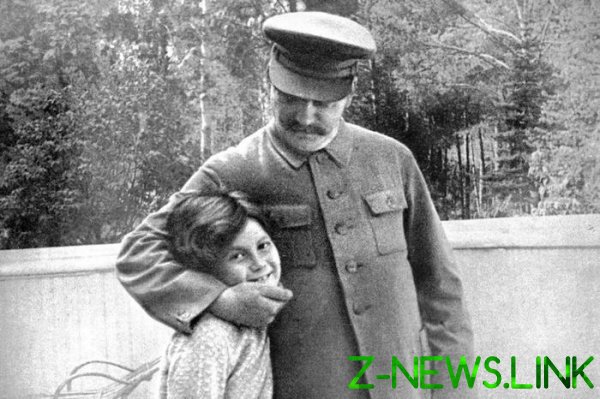
Stalin with daughter Svetlana
Thanks to the notes of Boris shumyatsky now we can get an idea not only about what films are watched Stalin in the years 1934-1936, but what an impression they made on him. We can start trying as fully as possible and to capture the exact replica of the leader and his entourage, their reactions to what was happening on the screen. For example, apparently, the favorite pre-war Stalin movie was released in 1934 “Chapaev”. In just six weeks, from 4 November to 20 December, he looked at his sixteen (!) time. “When the tape ended, I. V. got up and, turning to me, said: “we congratulate with luck. Great, cleverly and tactfully made””, — quoted Stalin’s way.
“Militants” from the civil war era is not limited. Similar popular and “light” genres, such as the first Soviet musical Comedy “Jolly fellows” (1934). Say: “while watching “Funny people” was Homeric laughter. [Stalin] contagious laugh. In conclusion, said, “all right. This picture gives the opportunity for interesting, entertaining relax. Experienced the feeling — just after the weekend. The first time I experience this kind of feeling from watching our film, among which were very good.
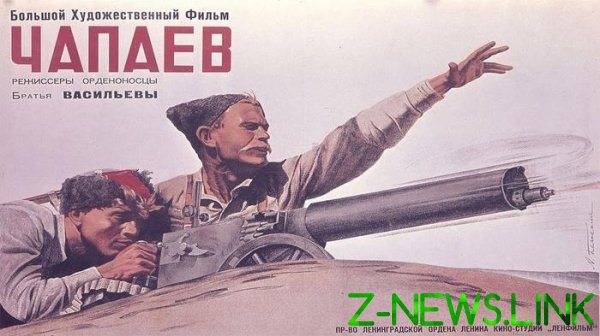
Director Grigory Alexandrov took the Merry men after his big overseas trip to Europe and North America. In total he spent outside the USSR four years (1929-1932), is actively studying the experience of foreign filmmakers, especially Hollywood. “Funny guys” for all their local peculiarities and ideological background were made on genre canons of American musicals, and although Soviet criticism first began to blame the film, closed after hits by the members of the Politburo and the above personal approval of Stalin’s “Jolly fellows” was still on wide screens, and was a phenomenal success. “The winning class wants to laugh happily. It is his right, and this joyful Soviet laughter, Soviet film should give the audience”, — wrote to say they were absolutely right. The triumph of this musical followed by two other blockbusters Alexandrov’s “the Circus” and “Volga-Volga” has demonstrated that in the Soviet society of the mid and second half of the 1930s years was never as great a demand for frivolous movies with a simple plot, full of musical hits, dance numbers and relatively witty humor.
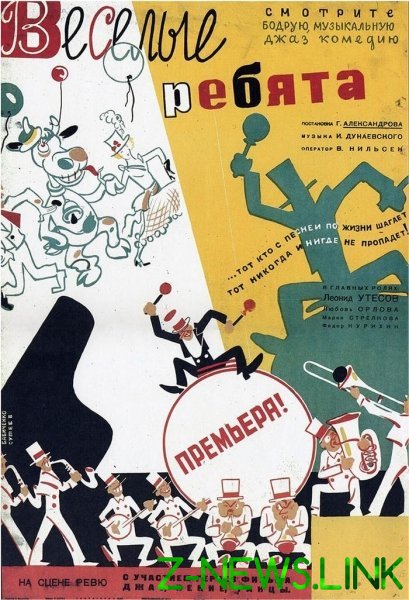
To catch up and overtake America
The world’s first state of workers and peasants began to vigorously engage in the cinema only a few years after Lenin’s fundamental principle. In the 1920s, especially during the NEP outlaws, a major role in the production of films continued to play a private Studio. The attempts of the party and government to put the process under control first gave no result, and only with the advent to leadership of the industry Boris shumyatsky, the process has become systemic.
Way made a career typical of the “old Bolsheviks,” many of whom were generalists. In the years of revolution and civil war, he was involved in the establishment of Soviet power in Siberia, then helped establish the Mongolian people’s Republic in the early 1920s, even came into conflict with Stalin, in circumvention of the people’s Commissar for nationalities achieving autonomy for Buryatia. Then he had to go into diplomatic service (Ambassador in Persia) and to direct a number of Moscow universities, while the party dumped him for the new responsibility. In 1930 he was appointed Chairman of the Association “Soyuzkino”, and from 1933 he headed the Department of kinofotodokumentov (GUKF), having held a position equivalent to narkomovskih.
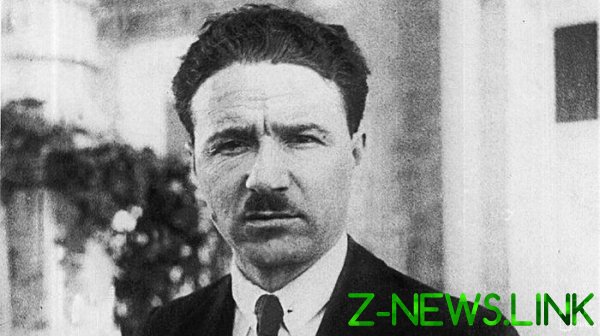
Boris Shumyatsky
Shumyatsky became head of the Soviet cinema in the most difficult conditions, when the growing ideological pressure of the state coincided and a fundamental restructuring of the industry. “Cinematography” came the sound, they were massively opened across the country, including in rural areas. Not enough equipment, projectors, film — industry was not up to it. Not enough movies!
Stalin had different attitudes to the American experience. For example, on the Kremlin session November 15, 1934 when viewing the whole set of Hollywood comedies, he said: “none of them no ingenuity and imagination, and there is a slight giggling. Comparing them with our films, one is struck by the stark difference. Fiction the Merry men — a huge skill in this respect, and most importantly the skill of the art, combined with some interesting music tape — the more”. At the same time, Stalin was in complete awe of color cartoons (when they were called “MULTIS”) Walt Disney and color cinematography in General. He knew the degree of backwardness of Soviet industry from the USA, highly recommended actively studying foreign experience. At the same session, he demanded to be knew, he personally went to Hollywood: “You need a very good all though the probe and, as far as I understand it, in France and in America.”
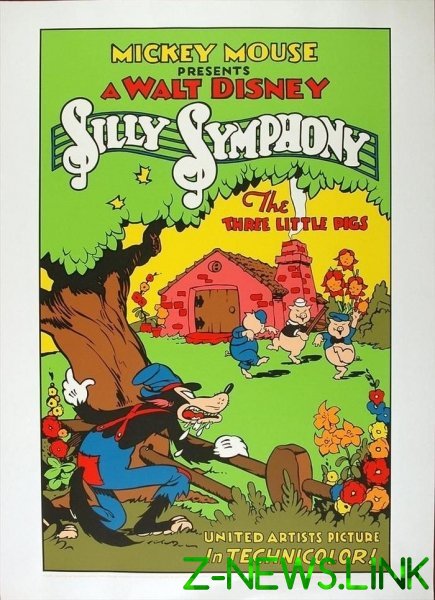
Disney “multi” was Stalin’s liking. “Three little pigs” (1933)
With the “owner” debate was fraught, and in may 1935, life in the company of several Soviet experts went to Europe first, and then the ocean. In the U.S., he spent three months, and what he saw impressed him a lot. First, the delegation did play at the highest level: shumyatsky was found and was closely associated with the major American Directors, producers and actors from Charlie Chaplin and Frank Capra to the many immigrants, including emigrants from the Russian Empire and Russian film Directors Lewis Milestone and Rouben Mamoulian.
Second, shumyatsky has carefully studied the process of organization of film production in the country, producing over 700 films a year (in the USSR produced more than ten times less). Soviet people’s Commissar of cinema shocked the technology field and the pavilion of the shooting, their clear rational schedule which allows (due to the suitable climate) almost year-round work on the films. Finally, he realized that Soviet films are technically and creatively is largely behind us due to the fact that filmmakers in the Country Councils have to deal with everyone, including administrative and organizational functions, to the detriment of their main mission. Returning in the autumn to Moscow, shumyatsky introduced the idea of “General reconstruction” of Soviet cinema, in which the main role was to play a new film location.
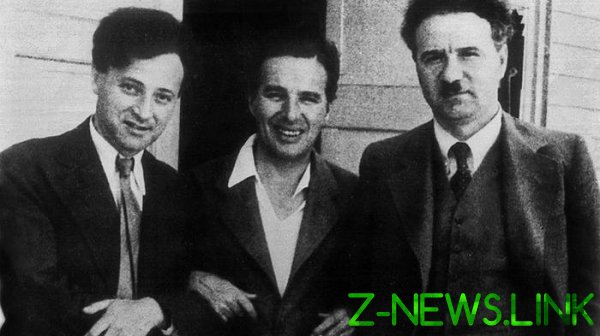
Shumyatsky (right) with Charlie Chaplin (centre)
While still in the US, shumyatsky received from the Chairman of the Soviet government Vyacheslav Molotov’s permission to enter into negotiations with American firms to supply equipment and specialists to create in the USSR the new “film Studio”. Its concept was ready by the autumn of 1935. Planned construction in the “southern areas” of the Soviet Union, a huge complex of four studios called “film location”. At each of the studios at the same time would work, five separate camera crews, and to lead this team had a producer, who took upon themselves the trouble of organizing and Directors would be freed for creative work. Yes, in the 1930-ies the concept of “producer” in full use in the USSR. At this complex, worked for the whole year, shumyatsky has pledged to release up to 200 films a year (three to four times more than it was before) with the prospect of increasing production of paintings to 700 pieces (which was comparable to the Hollywood).
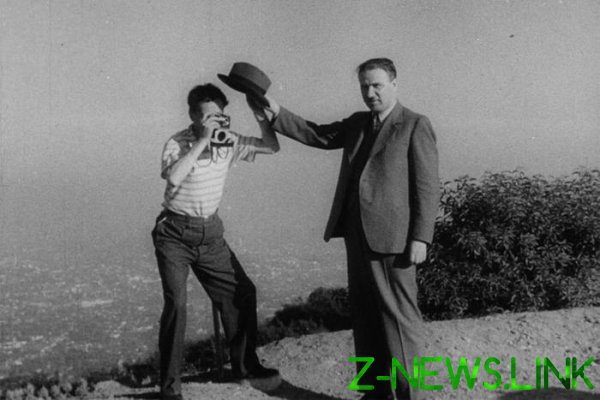
Life in Hollywood
A similar process of building their own Hollywood was in other countries, decided to make mass production an important tool for indoctrination of the population. In Rome under the personal supervision of Mussolini completed the construction of a future famous Studio Cinecittà (interestingly, the literal translation — also “Kinogorod”). The Nazis began the nationalization and expansion of their UFA. The Soviet Union against this background, promising ten thousand workers “Kinogorod” produces hundreds of films annually, would have looked quite in trend. After studying several locations by the special Commission of the Main Department of kinofotodokumentov decided that the most appropriate area to accommodate the new film looks South-West Crimea.
The budget of construction of the complex looked enormous (400 million roubles), but we can start hoping to convince film fans in Stalin that it is a profitable investment, because after the introduction of “southern production base” in build production of the new “film” was radically cheaper.
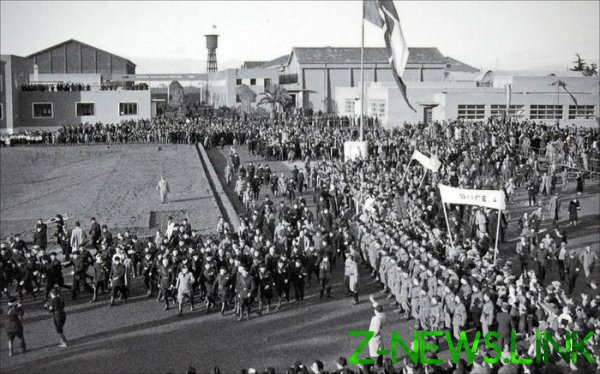
Grand opening of the Italian “kinogorod” Cinecittà, 1937
The tragic end of the Soviet Hollywood
In February 1936 from his trip to the United States returned writers Ilf and Petrov. In his series “one-story America” the authors of “Twelve chairs” mercilessly criticized so any Way Hollywood, claiming that almost all of its products is “below the level of human dignity.” After returning home, they immediately submitted to Stalin a note in which, in particular, were these words: “During a trip to America, coming to California, we read in the American press, the telegram that in the USSR the decision on building in the South of the cinematic city — Soviet Hollywood. […] This is the result of conversations and seeing the studios, we had serious doubts — do we need a special film location in the South of the country? Whether the onset of symptoms are needed in this city? Is this rational? […]…The sun has ceased to be a driving force in cinema. […] Americans constitute the disgusting pictures. 10 good movies a year in Hollywood have about 700 needy paintings”.
Shumyatsky responded immediately in a letter to Stalin: “we Must absolutely not know not only of cinema and its technique, but even just basic physics to come to a statement about the feasibility of replacing the sun in the movie artificial light. […] The refusal of filming on prescription T. T. Ilf and Petrov will need a number of electricity, for which every Studio needs to build a heavy duty power”.
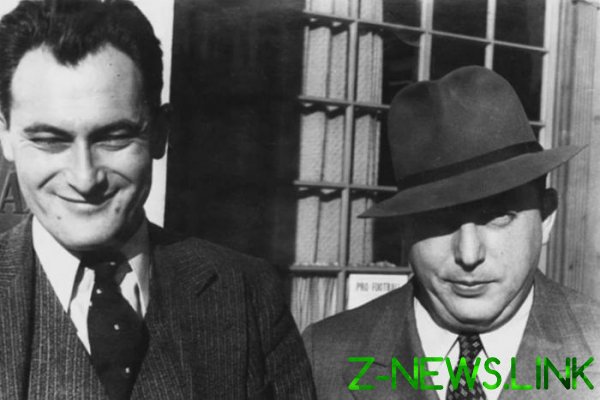
Eugene Petrov is a native of Chisinau, the Director Lewis Milestone
March 9, 1936, Stalin summoned way to the Kremlin, which decided to find out what “Ilf and Petrov decided to promote the replacement of the sun and nature decorations and artificial light.” Commissar movie explained the leader, “that’s bullshit, that neither nature, nor the sun to replace factually, economically, Ilf and Petrov anyone in Hollywood not seen.” Stalin agreed with the logic of life: “So, just chatting. And it is clear from their letters. Is it possible to take the film nature? What are the pavilions then it is necessary to build the size in kilometers, and all natural nature and the sun, forests, sea, mountains and rivers will not create. So we often have. See something from the window of the car and are issued for authenticity.”
Calling Ilf and Petrov “the talkers”, Stalin seems to be sided way. 4 July 1936 in the newspaper “Cinema” there was a message on the final selection of locations for new large construction projects of socialism: “GUKF acknowledged the most suitable place for the construction of kinogorod district baydary — Laspi — foros — Cape Ficlet in the Crimea.” But to say the whole story was supposed to be a Wake up call, because Ilf and Petrov were allowed to continue to “chatter” at the highest level. 5 Sep 1936 in Pravda, the main Soviet officialdom, published a feuilleton “the Glorious city of Hollywood.” Writers do not just change their mind, they just tightened the rhetoric: “American cinema is similar to an art, monkey love to the children like a human. Very similar — and at the same time unbearably disgusting. But if so, why did the Soviet Union build its own Hollywood?”
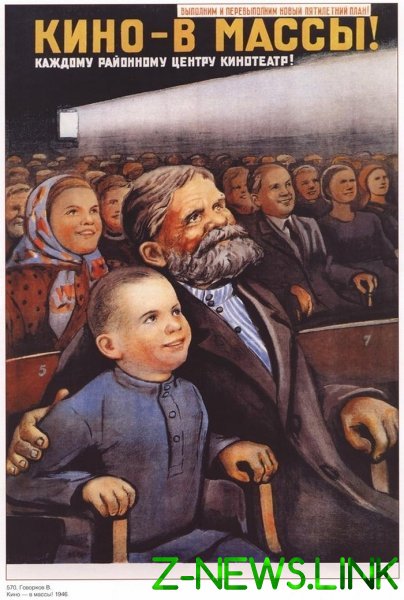
Stalin originally supported the idea of “Kinogorod” very quickly it was cooled. What was the immediate cause, we can only guess. Most likely, as usual, played the role of a whole range of reasons. First, apparently, the significance of economic considerations: in terms of the “growing international tension” the generous funding of mass production is rapidly losing its relevance. Secondly, increasing and bordering on the paranoid suspiciousness of Stalin, culminating in the “Great terror” of 1937-1938. In 1937 in the press are increasingly starting to appear article with the increasingly fierce criticism of the way. He was accused of bureaucracy, divorced from the masses, the establishment of his cult among filmmakers. The proximity of the people’s Commissar to the leader, close communication on the Kremlin screenings have not helped. The conflict with Stalin in the early 1920’s, trips abroad and lobbying in close cooperation with foreign companies, using their experience are aggravating circumstances.
In October 1937, was arrested closest friend and comrade shumyatsky Vladimir Nielsen, who went with him to Hollywood operator chief films of Grigory Aleksandrova (“Jolly fellows”, “Circus”, “Volga-Volga”). Four days later the newspaper “Cinema” accused knew that the opinion of “pest” Nielsen he considered “decisive”, sent it on a long trip abroad, put forward “the impudent rascal with a criminal past”. By this time life was supposed to understand everything. Nielsen has executed 20 January 1938.
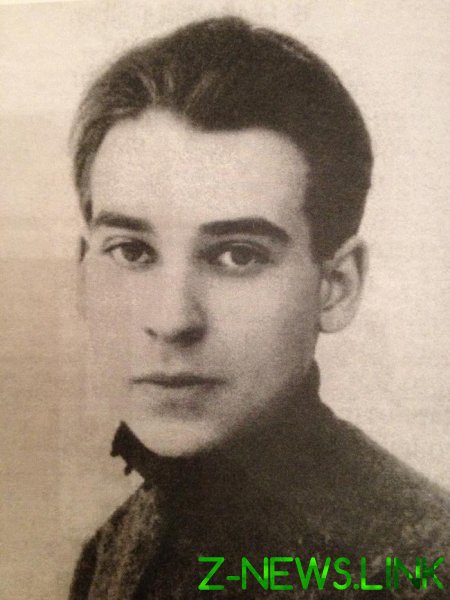
Vladimir Nielsen
The apartment itself shumyatsky, No. 398 in the already half-empty “house on the embankment”, came a little earlier in the night from 17 to 18 January 1938. Search and seizure of documents and valuables continued until the morning. Of course, after ruthless interrogations shumyatsky confessed. And in “sabotage”, and “work for Japanese and British intelligence”, and “prevaricate”. The construction project of the Soviet Hollywood was recognized as “vicious”. Shumyatsky was accused of preparing a terrorist act against the Soviet leadership. The indictment read: “In January 1937, a group of terrorists led by him, Shumyatsky, with the aim of committing a terrorist act against members of the Politburo of the CPSU(b) deliberately broke the spare bulb of the mercury rectifier and poisoned the screening room cinema in the Kremlin”.
28 Jul 1938 “fascist hireling”, a member of the “Trotsky-Bukharin-Rykov gang” Boris Zakharovich shumyatsky was sentenced to death and the next day shot. Behind him were arrested, and all the rest of the leadership of the Soviet cinema. About Hollywood in the Crimea, all the survivors were tried as quickly as possible to forget. After the war, and until the death of Stalin in the Soviet cinema came the “era malokartinya” when in theaters years spinning the same type and boring to yawn biopic great composers, scientists and the military. The foros was destined to become famous much later, in 1991, and most of the other events.
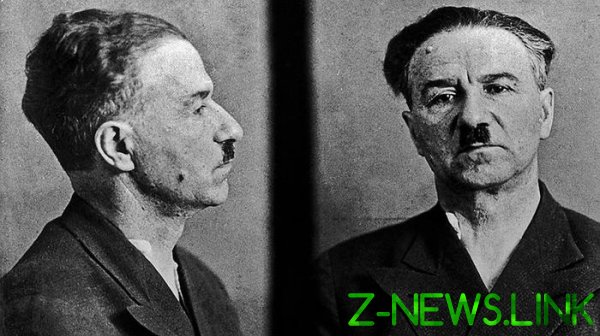
Boris shumyatsky after arrest
© 2019, paradox. All rights reserved.



